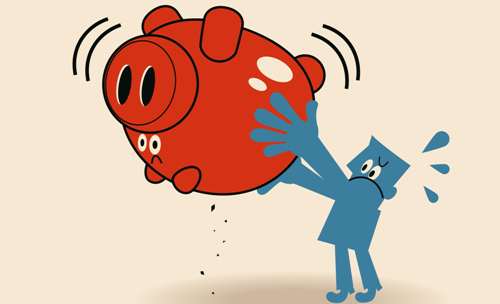Why Doesn’t The Goa Government Have Any?
It’s not like the Goan government doesn’t have an ambitious agenda. There are plans for a Smart City in Panjim, link state-of-the-art waste treatment plants, major new bridges, and upgraded infrastructure designed to attract tourists who might just spend more money than the current hordes of visitors who live out of buses and cook in open fields.
Increasingly, however, officials are acknowledging that there simply isn’t enough money to pay for these initiatives. The total budget for Goa’s government for the year 2015-16 has been estimated at Rs. 13,330 crore, but it’s a paper budget without any real guarantee the money will be made available, let alone spent.
The question of why the Goan government seems to have run out of money is not an easy one to answer because of a lack of transparency (Officials I contacted for this story would not reveal rupee figures). But evidence of a major financial crunch abounds.
When Goa Streets asked authorities about plans to build a bridge to Chorao Island, they said plans were there but the money wasn’t. When Nilesh Cabral, Chairman of the Goa Tourism Development Corporation, was asked recently why planned tourism infrastructure had yet to be built, he cited lack of funds. Unpaid government advertising bills were one of the reasons the state’s only Konkani-language newspaper, Sunaparant, shut down after a 28-year run this past August. The government’s much touted garbage collection campaign – with green-clad employees clearing waste from major roads – has been an on-again, off-again affair, with work stopping for long periods at a time because contractors have not been paid. This list goes on.
What is happening here? For one, the three-year-old mining stoppage has deprived the government of much-needed tax revenue. Secondly, a drop in high-end tourism has meant fewer taxable transactions. And third, the age-old problems of corruption, mismanagement, inefficiency and insufficient tax collectionpersist.
I asked Shailesh Ugadekar, who is Personal Assistant to Chief Minister LaxmikantParsekar, to explain the money shortfall, but he wasn’t able to do so.
“As far as money is concerned, each department, or each municipal council, or each panchayat, sees to its own finances,” he said.
When I spoke to Babita Angle, the Chairwoman of the Margao Municipal Council, the subject of the Sonsddo garbage dump came up. A plan to treat 40 years of accumulated waste through so-called “scientific capping”at the dump has yet to come to fruition. I asked her to comment on where the money comes from to deal with Margao’s garbage menace, and she said private “self-help” groups currently go “door-to-door” collecting money from ordinary citizens, but that the municipal council has now sent a proposal requesting state funds. Good luck!
To be sure, Chief Minister Parsekar has worked hard to reassure Goans that all is well. In his budget speech last March, he spoke of vast increases in government spending plans. Recently, he spoke of a Rs 1,054 crore increase in the allocation of funds from the Centre.
“We are already getting the requisite funds from the Centre for all our development works,” he said.The 2015-2016 budget declares that the Government “continues creating world-class infrastructure for the benefit of the people” – an assertion a large portion of the “people” would undoubtedly contest.
The latest tax levied on citizens is the Swachch Bharat (Clean India)is a cess of 0.5 % on services. Of course, those same citizens have yet to see a Clean Goa.
The thing about taxation is that if you see its results – good roads, uninterrupted electricity, decent schools and hospitals, well-maintained public infrastructure – then most of us would not mind paying up. It’s when the perception arises that the money is pocketed, ill-spent or otherwise squandered, that paying one’s taxes becomes an issue.
Is Goa’s government running out of money? From the looks of it, the answer is a resounding yes. That said, India is now the fastest growing major economy in the world, and Goa is certainly an integral part of India, so there’s certainly some reason for optimism. And yet Goans are wondering how many stalled projects, unpaid vendors and unfulfilled promises our little state can take.




